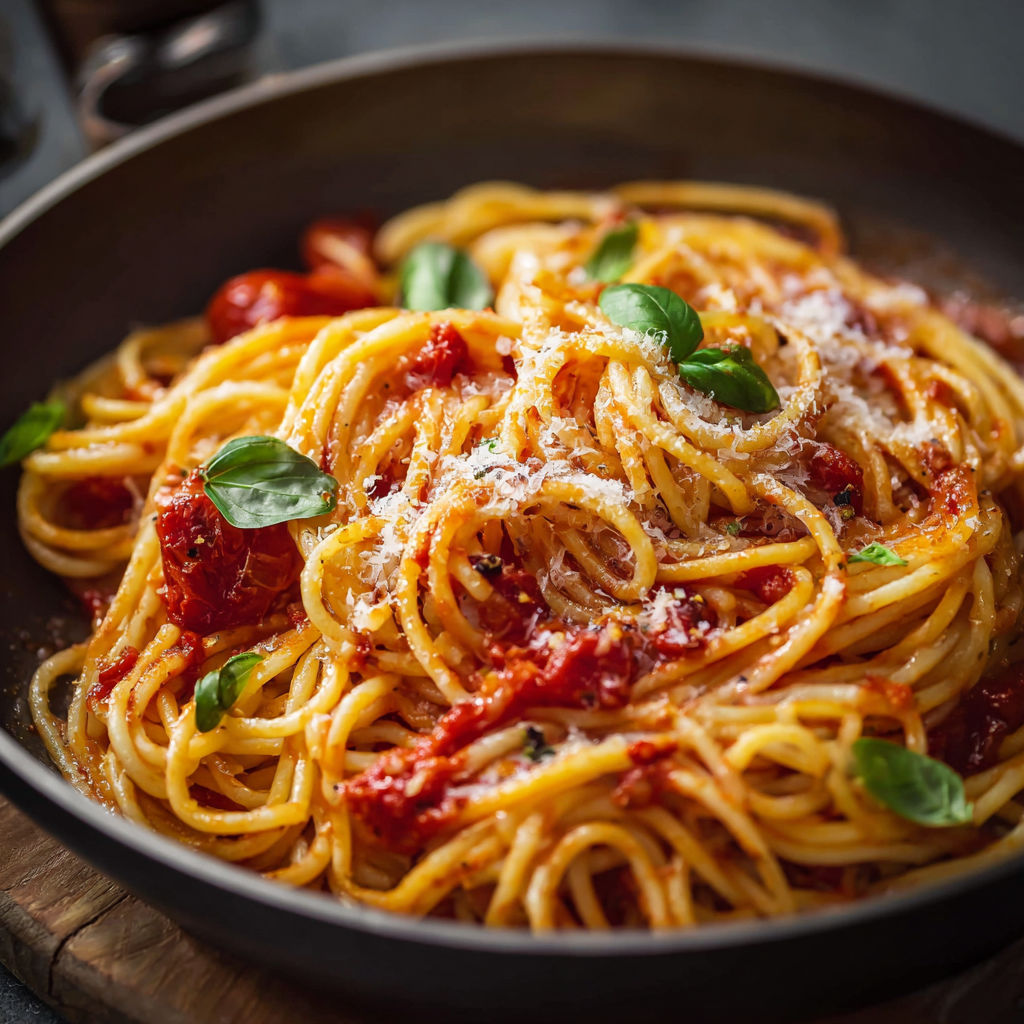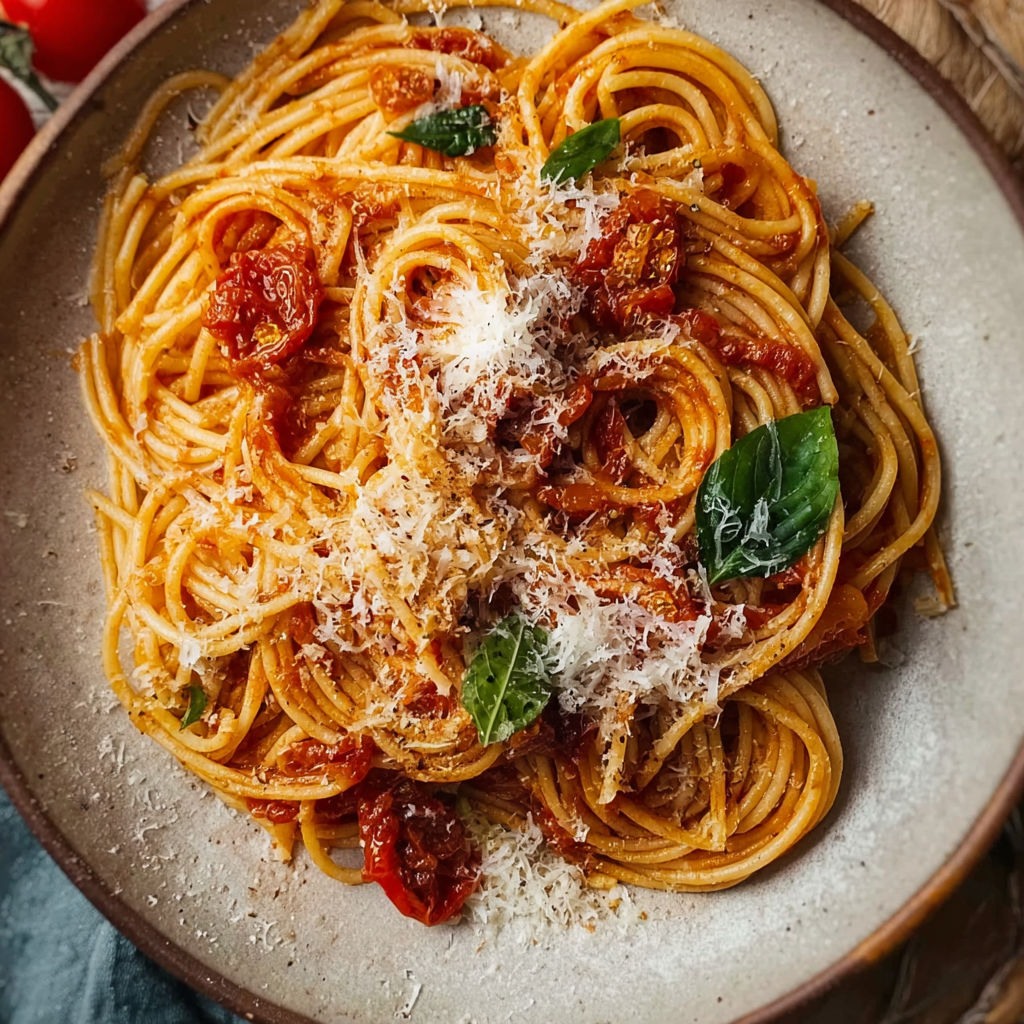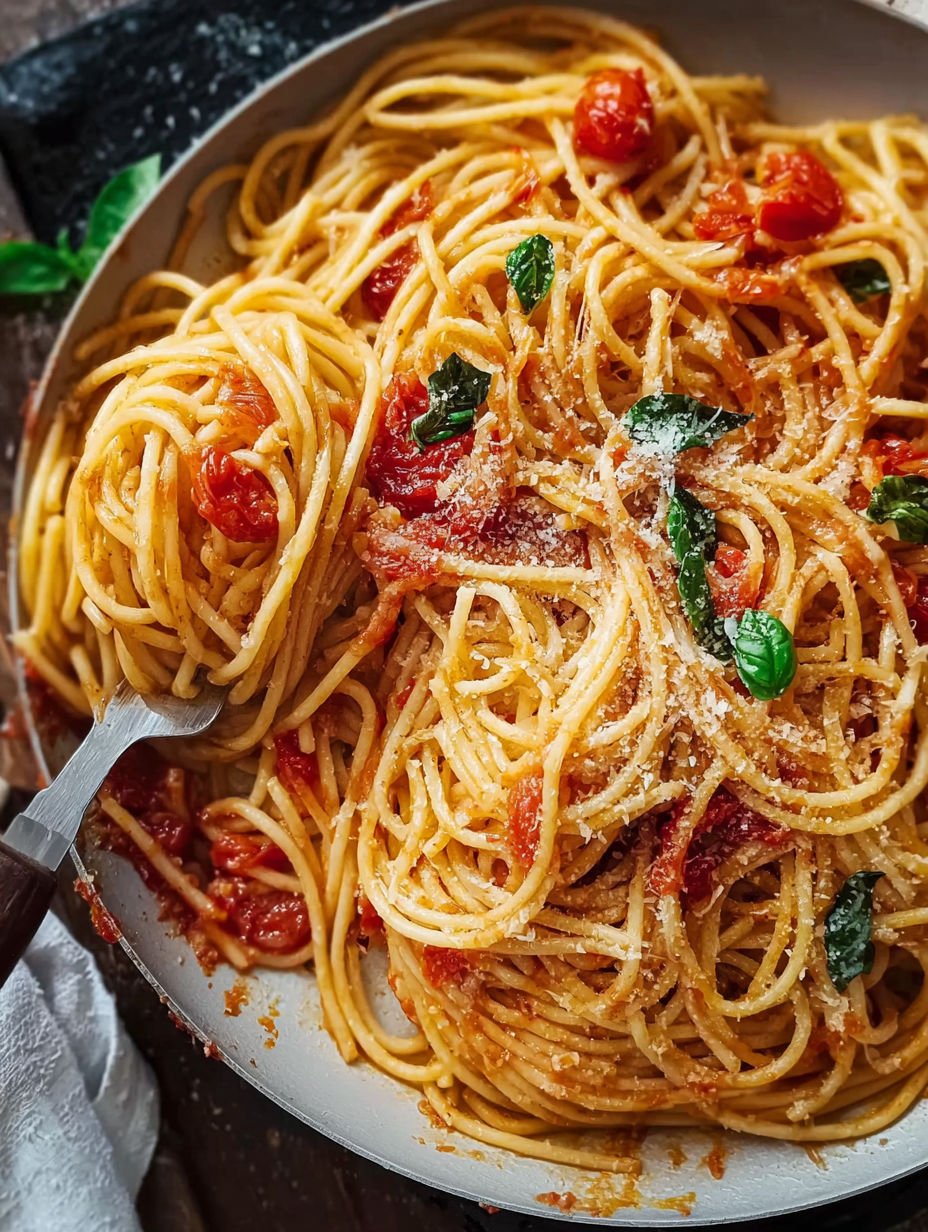 Pin
Pin
This iconic spaghetti dish from The Bear television series captures the essence of simple Italian cooking, letting a few quality ingredients shine through a perfectly balanced sauce. The magic lies in the infused oil and caramelized onion that create unexpected depth in a seemingly basic tomato sauce.
I first made this recipe after binge watching The Bear and became obsessed with recreating Carmy's famous spaghetti. My family now requests it weekly, and I've found the simplicity makes it perfect for both casual weeknight dinners and impressive dinner parties.
- Spaghetti pasta provides the perfect canvas for this delicate sauce look for bronze die cut pasta for better sauce adhesion
- San Marzano tomatoes are essential for their natural sweetness and low acidity regular canned tomatoes will create a more acidic result
- Yellow onion adds remarkable sweetness when caramelized the entire half goes in but gets removed later
- Fresh basil leaves infuse the oil with aromatic flavor always use fresh not dried for this recipe
- Red pepper flakes provide gentle warmth without overwhelming heat adjust to your spice preference
- Fresh garlic cloves smashed to release their oils rather than minced for a more subtle flavor
- Butter creates silky richness that balances the acidity of the tomatoes use unsalted to control salt levels
- Olive oil forms the base of the infused oil high quality extra virgin makes a noticeable difference
- Parmesan cheese adds the perfect savory finish freshly grated is significantly better than pre grated
How To Make The Bear Spaghetti
- Infuse the oil
- Add olive oil to a small saucepan with smashed garlic cloves, red pepper flakes, and fresh basil leaves. Heat over medium-low until it begins to simmer gently. The key is to avoid burning the garlic which creates bitterness. Let the oil bubble very gently for 1-2 minutes then immediately remove from heat. The aromatics will continue infusing as the oil cools.
- Cook the pasta
- Bring a large pot of heavily salted water to a rolling boil. Add spaghetti and cook until al dente according to package instructions, typically 8-10 minutes. Test by biting through a strand it should have slight resistance in the center. Before draining, reserve half a cup of starchy pasta water this is crucial for creating a silky sauce that clings to the pasta.
- Caramelize the onion
- Place half an onion cut-side down in melted butter and a splash of olive oil over medium-low heat. The key is patience here allow it to slowly caramelize for a full 8 minutes without disturbing it. This slow cooking releases natural sugars that dramatically transform the flavor profile of the entire sauce.
- Create the tomato base
- Add canned tomatoes to the pot with the caramelized onion, breaking them up with a wooden spoon. Season with salt and bring to a gentle boil before reducing to low heat. Cover and simmer for 8 minutes, allowing the flavors to meld and the sauce to slightly reduce and concentrate.
- Combine the elements
- Remove the onion half and stir the infused oil mixture into the tomato sauce. Add the reserved pasta water and simmer uncovered for 5 minutes to marry the flavors. Blend with an immersion blender until completely smooth for that restaurant-quality texture. The sauce should coat the back of a spoon but remain pourable.
- Finish the dish
- Add the drained pasta directly to the sauce and toss continuously until every strand is thoroughly coated. The pasta will absorb some sauce as it sits, so ensure it looks slightly saucy before serving. Plate immediately and finish with freshly grated Parmesan and additional basil if desired.
The secret weapon in this recipe is truly the caramelized onion half. My first attempt I skipped this step thinking it was unnecessary since it gets removed anyway. The difference was remarkable the onion adds a subtle sweetness and depth that transforms an ordinary tomato sauce into something extraordinary.
The Art of Simplicity
The genius of this recipe lies in its restraint. Each ingredient serves a clear purpose with no unnecessary additions. Chef Carmy from The Bear understands that excellent Italian cooking often means fewer ingredients treated with respect. The technique of infusing oil separately allows each flavor to develop fully before coming together in the final sauce. This approach creates distinct layers of flavor rather than a muddled sauce.

Making Substitutions
While traditional recipes are sacred for good reason, there's room for adaptations based on dietary needs. For a vegan version, replace butter with additional olive oil or plant-based butter. The sauce works beautifully with gluten-free pasta varieties as well. If fresh basil isn't available, you can substitute with dried herbs in the sauce, though the infused oil really benefits from fresh herbs. For a heartier meal, add cooked Italian sausage or mushrooms to the sauce just before adding the pasta.
Serving Suggestions
This spaghetti shines as a standalone dish with just a sprinkle of Parmesan, but pairs wonderfully with a simple arugula salad dressed with lemon and olive oil. For a complete Italian dinner, serve with garlic bread and a glass of medium-bodied red wine like Chianti or Montepulciano. The sauce also works beautifully with other pasta shapes like rigatoni or penne if you prefer something with ridges to capture more sauce.

Recipe FAQs
- → Can I use regular canned tomatoes instead of San Marzano?
Yes, you can substitute regular canned tomatoes, but San Marzano tomatoes provide a sweeter, less acidic flavor that's integral to this dish. If using regular tomatoes, consider adding a pinch of sugar to balance acidity and achieve a similar flavor profile.
- → Why do you leave the onion halves whole instead of chopping them?
The halved onions caramelize and release their flavor into the sauce without adding texture. This technique imparts a sweet depth while maintaining the sauce's smooth consistency. The onions are removed before blending, creating a silky result with concentrated flavor.
- → What does infusing the oil with basil achieve?
Infusing olive oil with basil, garlic, and red pepper flakes extracts the aromatic compounds in a way that distributes them evenly throughout the sauce. This creates deeper, more complex flavor than simply adding chopped herbs directly to the sauce.
- → Why reserve pasta water before draining?
The starchy pasta water helps bind the sauce to the pasta and creates the perfect consistency. The starches act as a natural thickener and emulsifier, helping the sauce cling to the spaghetti rather than pooling at the bottom of the plate.
- → Can I make this sauce ahead of time?
Yes, this sauce can be prepared up to 3 days in advance and stored in the refrigerator. In fact, the flavors often deepen over time. Simply reheat gently before tossing with freshly cooked pasta. The sauce also freezes well for up to 3 months.
- → Is there a way to make this dish vegetarian?
This dish is already vegetarian if you use vegetarian Parmesan (traditional Parmesan contains animal rennet). For a vegan version, use plant-based butter and omit the Parmesan or substitute with nutritional yeast for a similar umami flavor.
